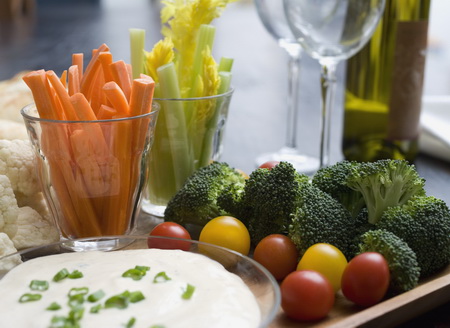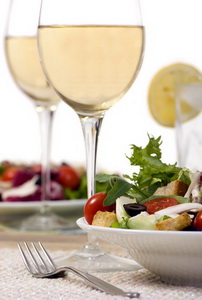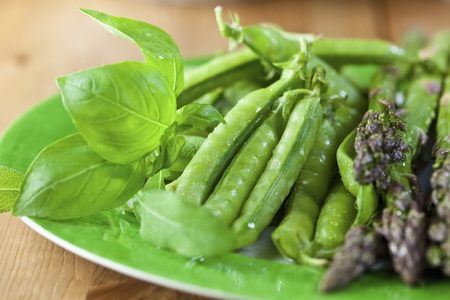Leanne and I had great fun chatting about Sauvignon Blanc on CTV as a lead up to Sauvignon Blanc Day May 4.
You can watch the video segment above by clicking on the arrow.
You can also watch our second wine video.
Santa Rita Reserva Sauvignon Blanc
Casablanca Valley, Chile
Sacred Hill Wine Company Sauvignon Blanc
Marlborough, New Zealand
Oyster Bay Sauvignon Blanc
Marlborough, New Zealand
Henry of Pelham Sauvignon Blanc 2020
Niagara Peninsula, Ontario V.Q.A., Canada
Villa Maria Private Bin Sauvignon Blanc
Marlborough, New Zealand
Santa Rita 120 Reserva Especial Sauvignon Blanc
Central Valley, Chile
Whitehaven Sauvignon Blanc
Marlborough, South Island, New Zealand
Big Bill Sauvignon Blanc
Western Cape, South Africa
San Pedro Gato Negro Sauvignon Blanc
Central Valley, Chile
Sauvignon Blanc Notes:
- This grape originated in Bordeaux, France
- Sauvignon comes from the French sauvage meaning wild likely because it grew wildly and natively in southwest France (all wine vines were originally untrained weeds)
- Today Sauvignon Blanc is planted in many wine regions around the world
- The style is crisp, dry, mouth-watering with refreshing acidity. In cool climates, aromas include green flavours such as fresh cut grass, chives, limebell peppers, nettles. In warm climates, there are more tropical fruit notes such as guava, passion fruit, mango, melon.
- It’s usually bottled on it’s own but in Bordeaux it’s blended with Semillon to create both dry table wines and famous dessert wines like Château d’Yquem.
- In California, it be called “Fumé Blanc”, a marketing term that is a nod to Pouilly-Fumé in the Loire Valley, also Sauvignon Blanc. The Fumé refers to fog that keeps the grapes cool in the mornings. Californian Sauvignon Blancs are often aged in oak and have a smoky character whereas those in other New World countries, such as New Zealand, generally are not oak aged to preserve fruit freshness.
- Sauvignon Blanc was first brought to California in the 1880s and planted in the cool climate of the LIvermore Valley.
- It arrives in New Zealand in the 1970s when it was originally blended with the German grape Müller-Thurgau.
- New Zealand led the charge on bottling Sauvignon blanc under a screwcap instead of a cork
- Most Sauvignon Blanc is meant to be consumed within 1-3 years of the vintage on the label. However, those form Bordeaux may age for decades due to blending, oak aging and other winemaking factors. Loire Valley Sauvignon Blancs, including both Pouilly-Fumé and Sancerre, also having good aging potential.
- The first Friday in May is International Sauvignon Blanc Day as it coincides with spring weather in the northern hemisphere and the height of the harvest for this wine in the southern hemisphere.
- I like to call it salad in a glass!
Here’s a terrific article on Sauvignon Blanc by Jenn McDonald Havers:
Let’s start with Sauvignon Blanc, my go-to wine when I’m eating anything that challenges other wines such as spinach quiche, salads and even asparagus. Sauvignon Blanc can handle all of these foods with ease.
Why is that?
What is Sauvignon Blanc anyway? It is a “vitis vinifera” grape originally from the Bordeaux region of France. It’s also considered one of the noble grapes, which describes grape varieties that are internationally planted and more widely recognizable.
Widely grown today, this varietal thrives in cooler climates, though it is also planted in warm areas such as California.
Generally, it is dry to very dry, light bodied, and crisp with high acidity that makes your mouth water. This makes it a refreshing choice as a summer patio wine or aperitif. This is also why it pairs so well with the foods I mentioned above.
We often see Sauvignon Blanc fermented in steel without the treatment of oak, however, in some warm climates, oak aging may be used to add some structure to the wine. The resulting wine is known as Fumé Blanc, and although this term is not regulated it is quite recognizable, particularly on wine from the United States.
Typical steel-fermented Sauvignon Blanc aromas and flavours include green herbaceous notes, cut grass, asparagus or canned peas, gooseberry, as well as citrus and tropical fruit flavours (pineapple, melon, lemon and lime). Some even use the descriptor “cat pee” though we’re not usually looking for that aroma!
Other examples show signs of steel, flint, minerality or “wet stone”. It can be tart on the palate. Climate and weather conditions can also impact the flavours and feeling of the wine.
For example, in areas where the vines are stressed and don’t get a lot of water, the tropical fruit flavours in the grapes may become more concentrated.
In many wine producing countries, you will see Sauvignon Blanc bottled on its own, but it may be blended with a small percentage of Sémillion which can add body and sweetness to the resulting wine. Depending on any particular country’s regulations around the labeling of wine, this may or may not be stated on the label.

Back to food, and in particular, salads, vegetables, and other foods that can be overpowered by wine. Crisp and mouth-watering Sauvignon Blanc complements bright, fresh summer salads tossed with light citrus vinaigrette.
The acidity can also balance and provide a contrast to the richness of a quiche or egg dish. Sounds like a great brunch wine! Sauvignon Blanc also pairs with light fish or seafood dishes, particularly when there is some citrus incorporated into the dish or light cream sauces.
 Jennifer Havers
Jennifer Havers
Wine Columnist, Ottawa Citizen
Jennifer Havers started honing her interest in wine in 2004 when she worked for the Vendange Institute in Ottawa.
During that time, she completed the demanding Wine & Spirits Education Trust (WSET) Level 3 Certificate.
Since then, she’s hosted numerous wine tastings and events, as well as publishing her own blog and participating actively in social media wine discussions. She is a wine columnist for the Ottawa Citizen.
Transcript
Let’s go back to Leanne Cusack and Natalie MacLean, for their toast-worthy tutorial.
Yeah, we’re just noticing some of the great faces in that last video, always doing great things in our community, and Natalie is doing great things for your palate and your knowledge…
Grape things, sorry.
Well played.
Normally, I hate to miss a pun but that was good on you.
I know, I know, thank you.
We have moved from Malbec, there will not be a pop quiz, not to worry, but you actually could go online and test your knowledge. We’ve moved to Sauvignon Blanc.
Sauvignon Blanc which also has its own day.
Which is?
May 4th.
So it’s always the first Friday in May, in the month of May, and that’s because the harvest Down Under, especially when we talk about New Zealand, which is famous for Sauvignon Blanc, is that’s the height of the harvest. So we have our harvest, grape-wise, in the fall, anybody who’s in the Southern Hemisphere – it’s more around this time of the year into May.
So what a perfect thing to do on May 4th, if you’ve someone in your life who really likes Sauvignon Blanc, bring them a bottle.
Absolutely, it’s such a springy wine, too, because, I call it, salad in a glass, right?
So it’s good for you?
In moderation.
Salad in a glass because, it’s crisp?
Because of the crisp, but also the aromas, literally it’s described as having asparagus, canned peas, freshly cut grass, chives, lemon zest, all of that, and they’re nice pleasant aromas, so therefore, you can, the thing about the food pairings would be some of those foods, fresh salads, seafood, quiche, vegetarian, that sort of thing.
So Sauvignon Blanc, guessing that there’s wild in there, so wild white, explain that.
Exactly, Sauvignon, savage, wild, it’s French. Again, like Malbec, Sauvignon Blanc’s origins are in France. So you think the Loire Valley, even Bordeaux where it’s blended with another grape, Semillon, to make not only dry table wines, but also some of the most famous dessert wines. Chateau d’Yquem is made from Sauvignon Blanc and Semillon. So Sauvignon means savage, and in this sense it means sort of like wild, because grape vines are really weeds. Unless they’re trellised and canopied, like you trim back all the leaves and so on, they’ll grow wild, and the grapes won’t ripen fully the way we need them to, to have the flavours for wine.
So unless they’re maintained, everything falls apart.
True.
We have about a minute, Natalie, but don’t fret. If you feel, we can’t remember all of the names of the wine, Natalie’s going to have them on her website for you.
Absolutely.
So we were chatting about New Zealand, and there are some really beautiful Sauvignon Blancs from New Zealand.
Yes, and you were telling me this was a new favorite of yours, Whitehaven.
Because it was, well, tried it a few years ago, but recently anyone else will know, it sold out everywhere, because it’s on sale…
Yeah, it’s on sale.
Fantastic price.
You always know the sales.
But it’s a really delicious wine.
Excellent, yes, these four are from New Zealand, sort of the heart, or what we best know Sauvignon Blanc for. We’ve got Villa Maria, Sacred Hill, and Oyster Bay, all in the sort of $19 to $25 range max. Canada does do Sauvignon Blanc well, and this is Henry of Pelham; from California we’ve got Big Bill. Down there can be called Fume Blanc, after sort of the fog or the smoke, but sometimes it is oak-aged whereas the others aren’t.
Is that a Mr. Mondavi move with the Fume Blanc?
Yes, it is, it is.
This is Henry of Pelham…
Yes, right here.
We wanted to make sure we had a shot of this, there we go.
Because Canada makes great Sauvignon Blanc as well, so unlike Malbec which is mostly Argentina, Sauvignon Blanc is planted widely around the world. But it does like a cool climate.
Cool climate, not as cool as ours necessarily, unless you’re here. And these last few, because you brought along some value.
Yes, yes, yes, they’re all Chilean. Pretty amazing prices, so we’re talking about $10 and $14 from Santa Rita, and of course we’ve got the party wine at the end. Everybody will be happy to see you if you bring the Gato Negro, which is a magnum, which is equivalent to two bottles of the regular size.
So big cat, big bottle of wine.
Exactly.
Great big piles of information.
Big party, big welcome.
Wonderful to have Natalie on this show, and of course there’s more information on her website. We’ll link you to that. Thanks a ton.
All right, cheers, Leanne.
Posted with Permission from CTV




















